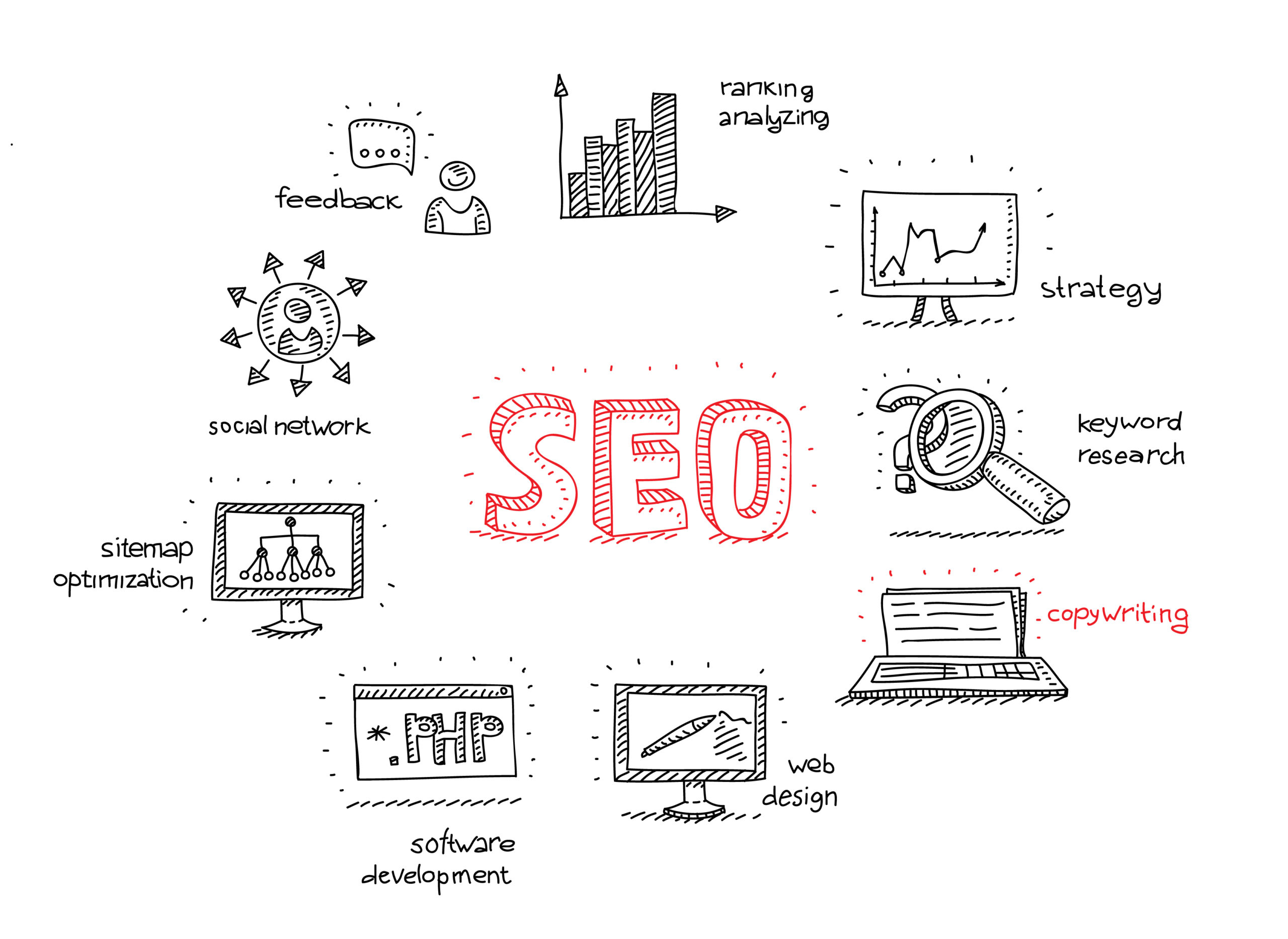You’ve probably heard the term “SEO Copywriter” and wondered what it means. SEO, shorthand for Search Engine Optimization, is your path to having your business found online.
But let’s back up a minute.
In the pre-web days, it was enough to be a copywriter. Print, TV, radio and direct mail were the media businesses used to get their messages out to customers and prospects. But then along came this thing called the World Wide Web, and business as we knew it began to change.
Copywriters (including yours truly) had to learn how to write for search engines as well as for people. In order for a company’s website to show up in the SERPS (search engine results pages that Google, Bing and others show in response to a user’s search query) the site had to be optimized with keywords and phrases.
If you build it, will they come?
Business owners often think that putting up a website will send droves of traffic their way. Well, it may work for baseball fields but for websites it takes a little more effort. The reality is, without SEO the search bots won’t find your site, and neither will prospects who need your products or services.
Enter: SEO copywriting. Keep in mind, what we call on-page SEO is only one piece of the optimization puzzle, but it’s a critical piece.
Why you need it
Studies show that 87% of purchases start with an online search. And I’d wager that since the advent of shelter-in-place, it’s even higher. We’re seeing brick and mortar businesses closing temporarily or permanently at an alarming rate with more shopping shifting to online. All the more reason to position your website with on-page SEO.
Elements of SEO Copywriting
Here’s what you need on your site to rise in the rankings:
- Well-researched keywords. Not necessarily the terms you use to describe your business, but the words or phrases customers enter for an online search
- Strategic application of the keywords in headlines, subheads and copy
- Keyword-rich page titles and meta descriptions, specific to each page
Avoid keyword stuffing
Thankfully, the practice has gone out of favor. But you still see examples of it on the web. It’s the annoying practice of repeating your keyword phrase over and over with the hope of attracting more attention from the search engines. Be sure your copy sounds like it was written for human ears, not for bots. Google frowns on keyword stuffing and may penalize your site for trying to put one over on them.
Use keywords judiciously, just enough for the search engines to recognize what your page is about.
Here’s what NOT to do:

This would make me click to another site in an instant!
Today, Google looks for quality content—content that is fresh, original and has value for customers.
What are Page Titles and Meta Descriptions?
Next to your content, the page title tag is the most important SEO element on your website. In a few words (up to 60 characters), incorporating keywords, the page title describes what the page is about. Remember, these are terms people use when they’re doing searches. About and Home are not page titles. Nobody searches for those.
Meta description is the snippet that shows up in the SERPs. Your meta description should contain the same keyword phrase as the page title and include a call to action. Think of these as little ads with about 150-160 characters.
A point to keep in mind when optimizing is localization. If you serve local or regional clients, incorporate your locale into the page title and meta description. For example, let’s say you’re a home remodeling contractor working in the San Francisco Bay Area. By adding the phrase San Francisco to your tags, and in your copy, you will not be competing with millions of contractors for page ranking. You will only show up for searchers who are looking for a home remodel contractor in San Francisco or the Bay Area.
By following these SEO copywriting basics your website has a better chance of being found by customers who are in the market for your products or services. Remember, with a website you can’t set it and forget it. Because when you add fresh content on a regular basis, in the form of blog posts, articles, videos, downloads, press releases…you’re giving people reasons to return. And you’ll also earn more search engine love.
If you’d like to chat about your website’s SEO, shoot me an email. I’m happy to take a look.
Learn more about Copywhiz services

